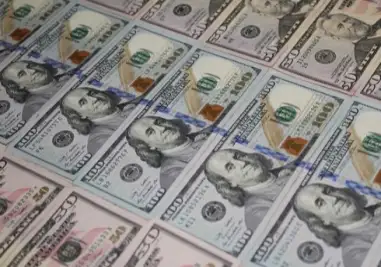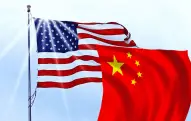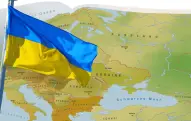Surprising Origins: Foods You Thought Were from One Country but Are Actually from Another
 When it comes to food, many dishes have become so synonymous with certain countries that we rarely question their origins. However, the history of some beloved dishes reveals that they actually hail from completely different places. Let's explore some of these surprising culinary revelations.
When it comes to food, many dishes have become so synonymous with certain countries that we rarely question their origins. However, the history of some beloved dishes reveals that they actually hail from completely different places. Let's explore some of these surprising culinary revelations.
1. Caesar Salad: Mexico, Not Italy
Despite its name, the Caesar salad has nothing to do with Julius Caesar or ancient Rome. This popular dish was actually created in Tijuana, Mexico, by an Italian-American restaurateur named Caesar Cardini in the 1920s. Cardini, who operated a restaurant in Tijuana, is said to have thrown together the salad with what ingredients he had on hand, and it quickly became a hit with American tourists.
2. Croissants: Austria, Not France
The buttery, flaky croissant is often seen as the epitome of French pastry, but it actually originated in Austria. The "kipferl," a crescent-shaped bread, has been baked in Austria since the 13th century. The croissant as we know it today was introduced to France in the 17th century by Viennese bakers, where it was adapted into the puff pastry version that became a staple of French cuisine.
3. Fortune Cookies: USA, Not China
Often associated with Chinese restaurants, fortune cookies are not a traditional Chinese dessert. In fact, they were invented in the United States, most likely in California in the early 20th century. The idea was inspired by Japanese crackers called "tsujiura senbei," which contained small fortunes or sayings, but the modern fortune cookie as we know it was popularized by Chinese-American entrepreneurs.
4. Spaghetti and Meatballs: USA, Not Italy
While spaghetti and meatballs is often considered an Italian classic, it is actually an American creation. Italian immigrants in the United States adapted traditional Italian pasta dishes to include larger portions of meat, which was more affordable and abundant in America. In Italy, pasta is typically served with smaller portions of meat, or with no meat at all.
5. Chimichanga: USA, Not Mexico
The chimichanga, a deep-fried burrito often associated with Mexican cuisine, was actually invented in the United States, specifically in Arizona. One story credits its creation to a Mexican-American restaurant owner who accidentally dropped a burrito into a deep fryer and decided to serve it anyway. The dish quickly gained popularity in Tex-Mex cuisine, particularly in the southwestern United States.
6. French Fries: Belgium, Not France
Despite their name, French fries are believed to have originated in Belgium. The story goes that villagers in the Meuse Valley of Belgium would fry small fish as a staple food. When the rivers froze in the winter, they turned to frying potatoes instead, cutting them into the shape of the small fish they were used to. French soldiers who were stationed in Belgium during World War I are thought to have popularized the dish, calling them "French fries" because French was the language spoken in that region of Belgium.
7. Sushi: China, Not Japan
While sushi is now closely associated with Japanese cuisine, its roots actually lie in ancient China. The original form of sushi, known as "narezushi," was a method of preserving fish in fermented rice. This technique spread to Japan, where it eventually evolved into the fresh, vinegared rice and seafood dish that we know today as sushi.
8. Chicken Tikka Masala: UK, Not India
Often considered a quintessential Indian dish, chicken tikka masala was actually created in the United Kingdom. The story goes that a British chef of Bangladeshi origin invented the dish by adding a tomato-based sauce to traditional Indian chicken tikka, catering to the British palate's preference for saucier dishes. Today, it's one of the most popular dishes in British Indian cuisine.
9. Pavlova: New Zealand, Not Australia
Pavlova, a meringue-based dessert topped with fruit and cream, is often the subject of debate between Australia and New Zealand, both of which claim to have invented it. However, historical evidence points to New Zealand as the origin of this dessert, created in honor of the Russian ballerina Anna Pavlova during her tour of the region in the 1920s.
10. Belgian Waffles: USA, Not Belgium
Belgian waffles, as Americans know them, are not something you'd commonly find in Belgium. The version popular in the United States, characterized by large, deep pockets, was introduced at the 1964 New York World's Fair by a Belgian named Maurice Vermersch. However, these waffles were actually based on a recipe for "Brussels waffles," and Vermersch decided to call them "Belgian waffles" because most Americans weren't familiar with Brussels.
In conclusion, food is a fascinating window into history and culture, and these examples show how global influences have shaped what we eat. Next time you enjoy one of these dishes, you'll know that their stories are just as rich and complex as their flavors.










































